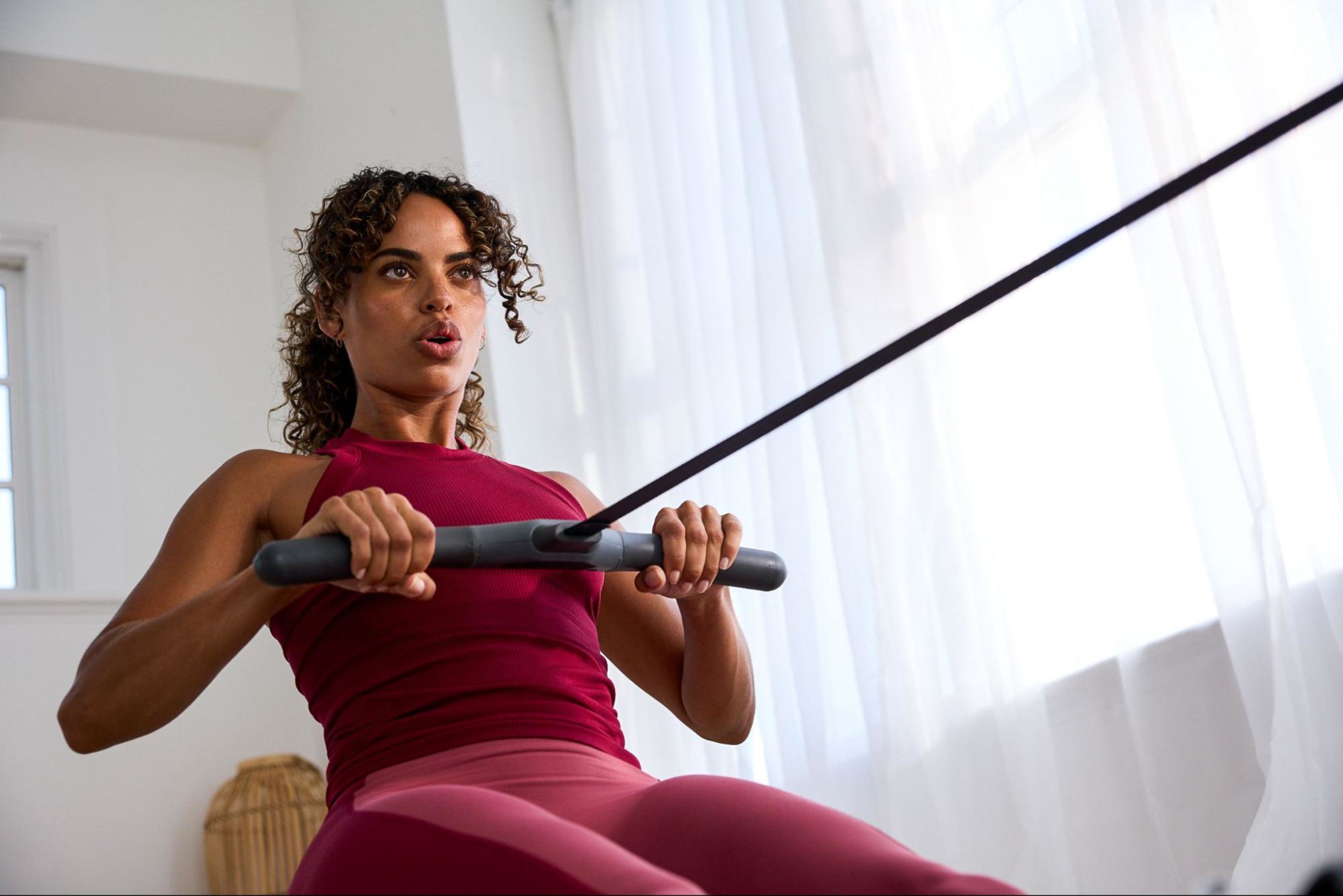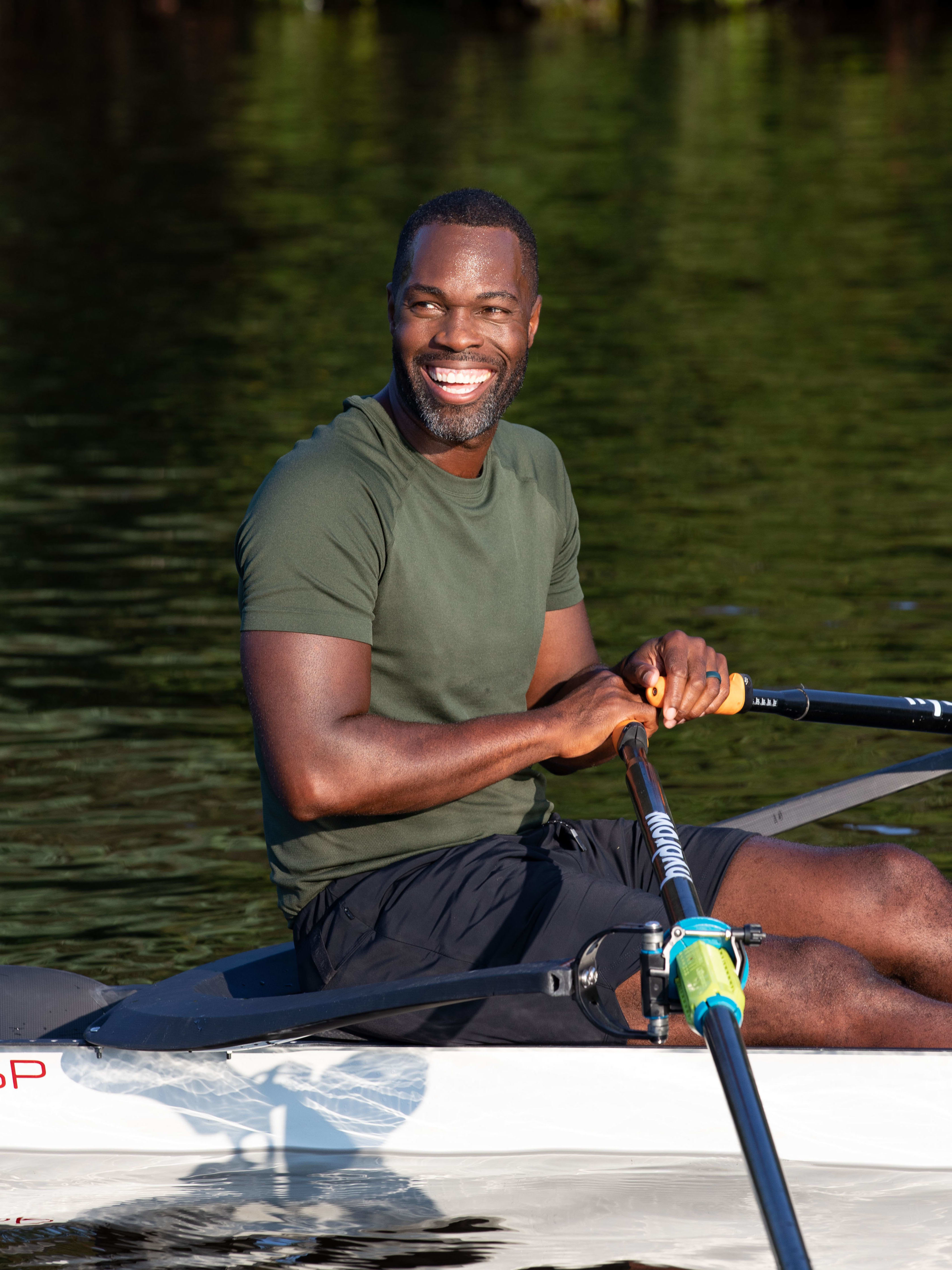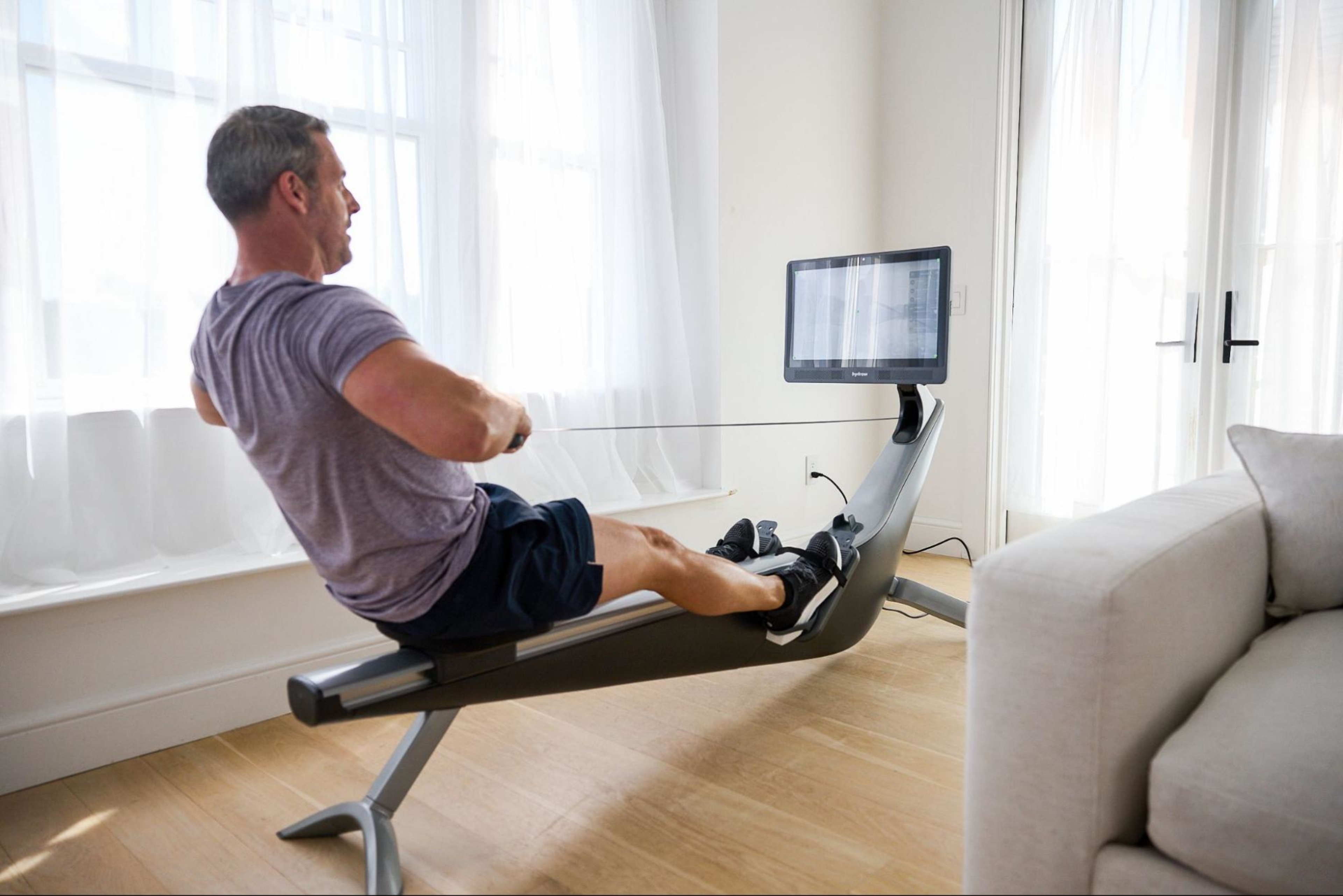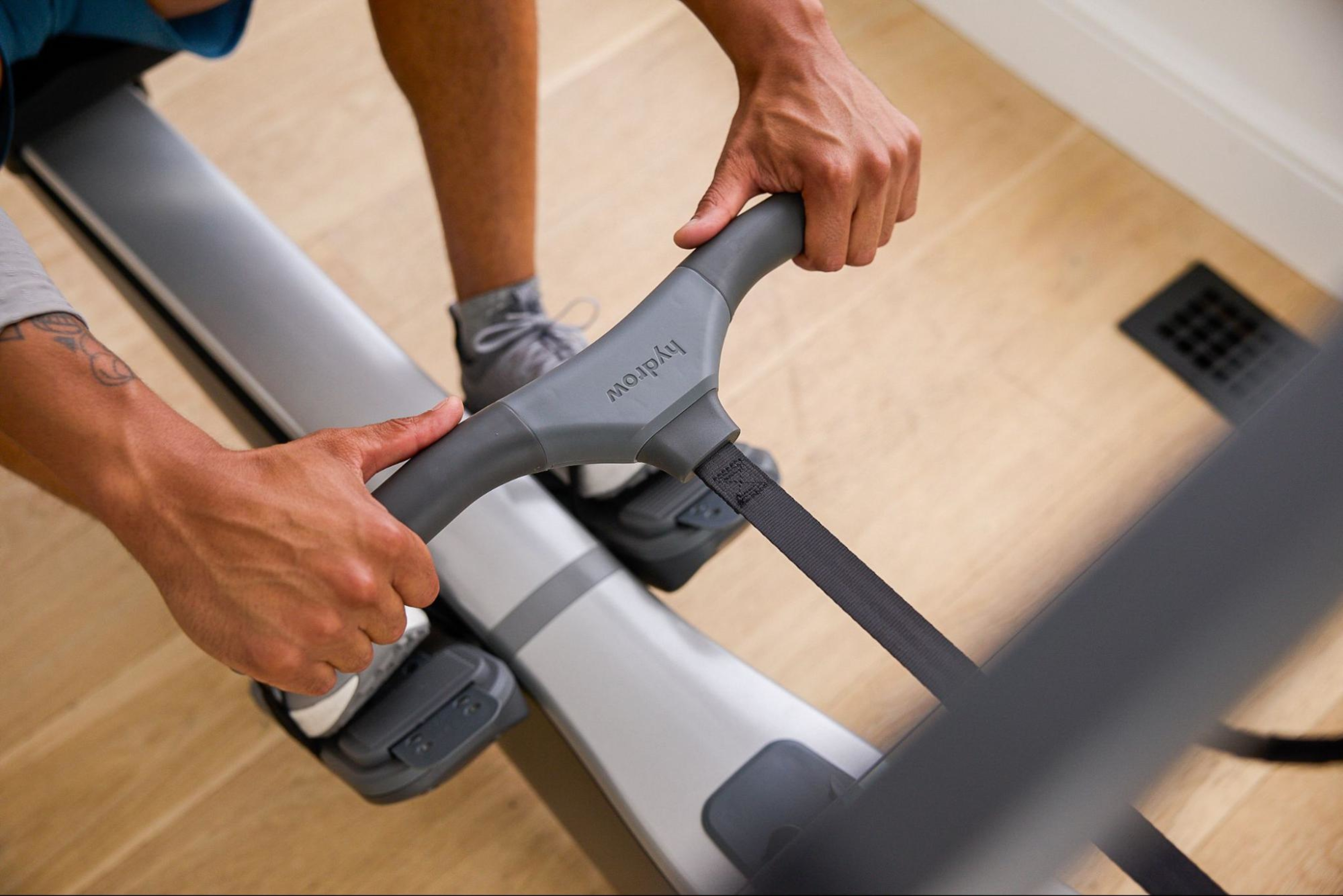Rowing Strong: How to Prevent and Treat Common Rowing Injuries

Rowing is a fantastic full-body workout that engages multiple muscle groups, promotes cardiovascular health, and has an amazing community to motivate and support you along your fitness journey. While rowing is a low-impact exercise, it is possible to occasionally stress or strain some parts of your body while doing a rowing workout.
It’s important for rowers of all skill levels to understand the types of injuries that can occur while rowing and know how to prevent and treat them. In this blog post, we’ll explore four common rowing machine injuries and offer practical advice on avoiding and managing them, including:
Let’s get started!
1. Lower-back strain from rowing
When starting their rowing journey, many people inquire about the potential for lower-back strain. The repetitive motion of rowing can put stress on the lower back, leading to muscle strains. However, by listening to your body and using the right rowing technique, you can take care to avoid this common indoor rowing injury.
How to prevent lower-back injuries from rowing
Here are some common tactics for avoiding lower-back strain while rowing:
Proper Technique: Ensure that you have proper rowing technique. A rowing coach or experienced rower can help you maintain the correct form to minimize strain on the lower back. There are numerous technical guides to executing the rowing stroke for those that are new to the sport.
Core Strengthening: A strong core provides essential support to the lower back. Incorporate exercises like planks, Russian twists, and leg raises into your routine to strengthen your core muscles.
Gradual Progression: Avoid pushing yourself too hard, too soon. If you are inflexible or lack mobility, make sure to do exercises that will help you increase your mobility. You can also play with the amount of compression that you use to execute the stroke so that you can push yourself without injury.
How to treat lower-back strain from rowing
If you experience lower back pain after your rowing workout, consider:
Rest and Ice: Give your lower back some time to recover and use ice packs to reduce inflammation.
For the first 24–48 hours, ice for 10 to 15 minutes three to five times per day.
Start applying heat for 10 to 15 minutes two to three times per day for the next two to three days to increase blood flow.
Start adding gentle mobility exercises before diving back into a strenuous workout.
Stretching and Mobility: Gentle stretching can help alleviate tension in the lower back. Incorporate stretches for the hamstrings, hip flexors, and lower back into your routine.
Professional Guidance: If the pain persists, consult with a healthcare professional or a physical therapist for personalized advice and rehabilitation exercises.
Related blog: Is Rowing Good for Your Back?
2. Shoulder injuries from rowing
The shoulder is another area where you need to take care to prevent injury. If you’re rowing for long periods, overuse can lead to muscle fatigue and inflammation, causing shoulder pain.
How to prevent shoulder injuries from rowing
Proper Warm-up: Warm up your shoulder muscles before rowing with dynamic stretches and exercises. This prepares your shoulders for the repetitive motion of rowing.
Strengthening Exercises: Incorporate shoulder-strengthening exercises, such as lateral raises and shoulder presses, into your cross-training routine.
How to treat shoulder injuries from rowing
Rest and Reduce Intensity: Give your shoulders time to rest and consider reducing the intensity of your workout to prevent further strain.
Physical Therapy: Consult with a physical therapist for targeted exercises that can strengthen and rehabilitate the shoulder muscles.
3. Wrist and elbow strain from rowing
People new to rowing will often hold their rowing machine handle too tight, leading to wrist or elbow strain.
How to prevent wrist and elbow strain from rowing
Proper Grip: Ensure that you have a proper grip on the rowing handle. A relaxed grip with fingers wrapped around the handle can reduce strain on the wrists and elbows.
Strengthening Forearms: Perform exercises that strengthen the forearm muscles, such as wrist curls and reverse wrist curls.
Regular Stretching: Stretching the wrists and forearms regularly can improve flexibility and reduce the risk of strain.
How to treat wrist and elbow strain from rowing
If you experience wrist or elbow pain:
Modify Your Technique: Adjust your rowing technique to reduce strain on the affected areas.
Compression and Elevation: Consider using compression sleeves for support and elevate the affected limb to reduce swelling.
4. Knee injuries from rowing
Knee injuries can occur from over-compression and improper foot position.
How to prevent knee injuries from rowing
Proper Foot Placement: Ensure that your feet are securely strapped into the rowing machine with the strap across the balls of your feet.
Do Not Over-Compress: Everyone has a different amount of flexibility in their calves, hamstrings and quads. Play around with an amount of leg compression that is comfortable and does not cause pain in the knees.
Quad and Hamstring Strengthening: Strengthening the muscles around the knee, such as the quadriceps and hamstrings, can provide added stability.
How to treat knee injuries from rowing
Low-Impact Exercises: Take a break from rowing. Engage in low-impact exercises such as swimming or cycling to maintain cardiovascular fitness without putting excessive strain on the knees.
Orthopedic Evaluation: If the pain persists, consult with an orthopedic specialist for a thorough evaluation and personalized treatment plan.
Take care with your rowing workouts to avoid injury
Rowing is a fantastic sport that offers numerous health benefits, but it's essential to prioritize injury prevention and address any issues promptly. By incorporating proper technique, strength training, and proactive measures, rowers can enjoy this full-body workout while minimizing the risk of common injuries. If injuries do occur, early intervention and professional guidance can make a significant difference in recovery. Keep these tips in mind to row strong and stay injury-free.

Explore Hydrow
Learn more about how you can transform your fitness routine with a rowing machine.







